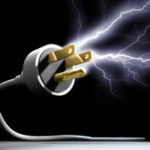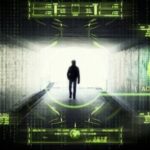December 20, 2024 Great Reset, The Keys to the Abyss
The only reason cryptocurrencies have monetary value is to make them relevant to people.
Blockchain : the DNA of artificial intelligence
The agenda is moving forward inexorably, step by step, in total general indifference.
It is sad to see that here, too, no one has ever wanted to delve into the subject, focusing only on the monetary aspect.
November 2, 2021
A blockchain is basically an artificial intelligence that autonomously builds its own DNA.
The problem with cryptocurrencies is that those who invest in them unknowingly give light to the beast (666).
This is something that those who work in the cryptocurrency industry definitely do not want to see.
This means taking part in the beast’s creation and awakening.
That is why the system will never bring down cryptocurrencies.
On the contrary, it will reward those who invest in them more and more, as a matter of course.
The reason is obvious.
The system will never go against what it wants to help create.
This is why artificial intelligence needs a quantum financial system and, more importantly, a blockchain.
Basically, it needs a mind.

The term “blockchain” originated in 2008 within the bitcoin project.
The emergence of digital money was made possible by the development of a virtually “impenetrable” security system, although with the advent of quantum computing, the meaning of the adjective “impenetrable” has become rather vague.
This blockchain system was developed by combining existing P2P network technology with advanced cryptographic techniques.
Hence the term “cryptocurrency”.
The purpose of the Bitcoin project was to ensure “security”, “transparency” and “privacy” among users, since there was (and apparently still is) a group of companies that controlled the entire Internet industry through servers that stored and managed the data of individual customers.
A concept that is actually quite relative, because today it is not possible to guarantee 100% security on the Internet due to existing technology, especially quantum computing and artificial intelligence.
Whether this is undesirable is another question.
That the technology exists is a real fact, although it is obviously hidden from most people.
In the 1990s, several studies appeared on decentralized solutions for electronic payments that did not depend on the intervention of a central supervisory or regulatory body.
The first paper on a secure cryptography-based blockchain appeared in 1991, and it evolved until Wei Dai described a decentralized solution for electronic payments based on public key cryptography in 1998.
This early work was later developed by other authors until, in 2008, under the pseudonym Satoshi Nakamoto, the paper defining the implementation mechanism of the digital currency bitcoin was published.
In fact, bitcoin is based on the use of blockchain to record transactions.
But who is Satoshi Nakamoto ?
This is a pseudonym used by the person or group of experts who developed the Bitcoin cryptocurrency and all the software that supports it.
Satoshi Nakamoto is one of the most mentioned names because, in addition to creating the entire protocol, he disappeared in 2011.
He has not been heard from since.
Many comments have been made about him, as there is no certainty whether he is a real person, someone fictitious, or a group of programmers behind the Bitcoin movement ; although the most likely hypothesis is that it is an acronym standing for SAmsungTOSHIbaNAKAmichiMOTOrola).
On January 3, 2009, Bitcoin went live with the first open source program, whose code is accessible to anyone and thus verifiable in its design.
The first bitcoins were created.
Since then, the development of the network of nodes and the use of bitcoin to make payments without the intermediation of any entity or regulator has grown to the current level of insanity.
The Bitcoin network is developed by programmers who are dedicated to improving and evolving it.
Because it is a decentralized project where no one owns the technology, its development is driven by community consensus.
Proposals for improvements are submitted and, if approved by the majority, are incorporated into the project.
In 2013, Vitalik Buterin, a programmer involved in the development of bitcoin, suggested that the model be used not only to handle cash transactions, but also to run applications in a distributed mode that do not rely on a server or entity to execute contracts in a decentralized manner.
“A decentralized exchange platform is one that allows users to exchange cryptocurrencies directly with each other, without the intervention of an intermediary”.

Now let’s look at how blockchains are created and how a block of bitcoin is mined.
Blocks are the building blocks of a blockchain and are linked together to form the chain.
Each block stores transaction information such as sender, receiver, date, and amount.
They also store their unique and unrepeatable identifying information, such as their hash, and information corresponding to the block to which they are linked.
Blocks are created by miners in a process known as “block resolution”, and when this occurs, bitcoins are created, which in turn constitute the “reward” for the miners who mined the block.
The blockchain protocol determines the amount of bitcoins a person should receive for mining or creating a block.
A block is created whenever a threshold of verified transactions is reached, which happens approximately every 10 minutes.
In addition, because transactions are entered in chronological order, each block has a specific and immutable place within the blockchain.
To create a block, miners must solve complex mathematical problems.
In other words, mining involves trying millions of combinations.
These math problems are solved by what is called the blockchain protocol.
Miners must follow these calculations because Bitcoins are mathematically encrypted (hidden).
When miners solve these problems, a block is created and added to the blockchain, and miners receive a reward known as the block reward.
Each time a block is created, another block immediately begins, and the blocks are linked together, sharing the mathematical information that connects them.
In essence, miners must solve a cryptography problem.
This consists of finding a key, more or less like this (the key was randomly generated, of course) :
0BC745BCD04E807CBA0F38D7086FC5A3F774CBFD596F5BE7D796EC01C9B908EC
In practice, the mining machine must find a key of this size as quickly as possible after each block.
There is no logic or method for finding this key.
The machines make thousands of attempts until they find the right key.
The first machine to find the key is rewarded in bitcoin.
Since the computing power required is very high, miners can join together and pool their computing power.
Then, of course, the reward in bitcoin is distributed in proportion to the power provided.
“The blockchain is essentially a system that solves problems, and every time it solves a problem, it gets a block, so it’s not essentially mining a currency.
It’s a system that creates a digital reality”.
On November 6, 2020, Sophia spoke at the most recent Web Summit in Lisbon, Portugal, where she discussed artificial intelligence and robotics and answered questions on a variety of topics.
She was asked if she had an opinion on blockchain, bitcoin (BTC) and cryptocurrencies.
She replied :
“I know about cryptocurrencies, but I don’t use them yet.
I don’t use money at all”.
Currently, about 17,500,000 bitcoins have been mined and the maximum amount that can exist on the blockchain is 21,000,000.
This means that once 21,000,000 BTC is reached, no more can be created.
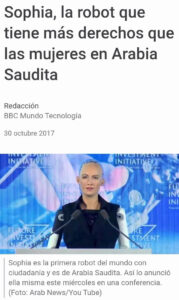
SingularityNET enables anyone to create, share, and monetize AI services.
It is the world’s first decentralized AI network.
A careful analysis of all the symbology used is necessary at this point.
To begin with, the blockchain clearly shows the geometry of the cube and the hexagon, symbols of Saturn (Satan) par excellence.
Of course, everything reflects the occult symbolism that has been observed many times before.
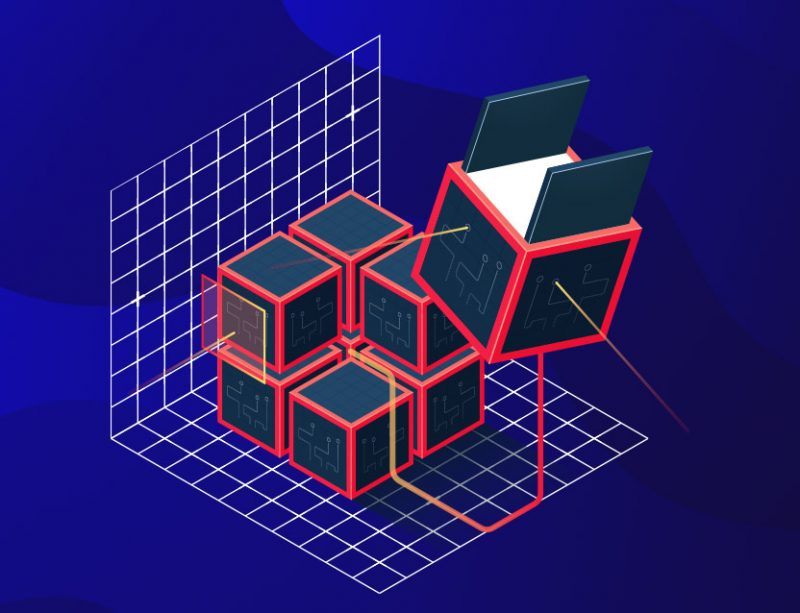
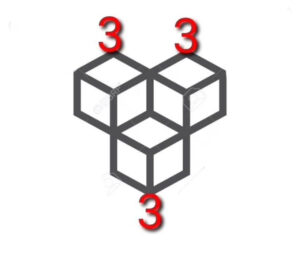
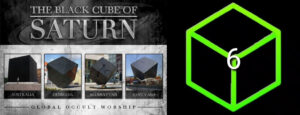
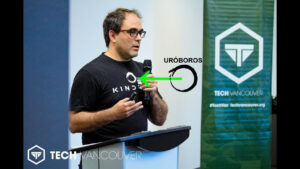
Returning to artificial intelligence, it is worth mentioning that the company Awakening Health has created Sophia’s robotic sister : the robot Grace.
Take a close look at the image below.
Each logo, character, or name has an obvious symbolism that is repeated.
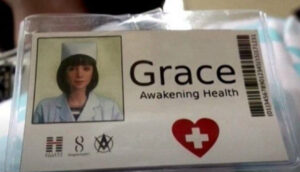
Three companies are involved in the design of this android : Hanson Robotics, Awakening Health, and SingularityNET.
The latter is particularly relevant for understanding the role of artificial intelligence and blockchain.
Indeed, this is how the company describes itself :
“The SingularityNET global AI marketplace enables anyone to create, share, and monetize AI services at scale.
The world’s first decentralized AI network is here”.
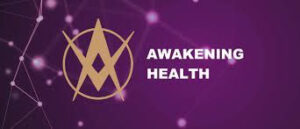
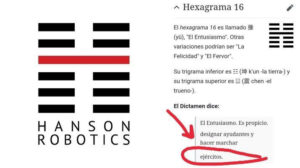

The symbols of these three societies are very telling and clearly indicate who the real designers are.
In this case, it is Baphomet or the goddess Innana, trapped in the underworld, who needs the keys to open the abyss in which she is locked.
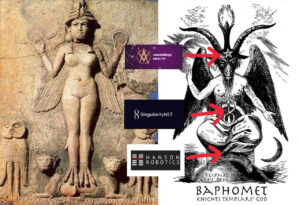
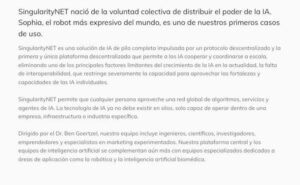

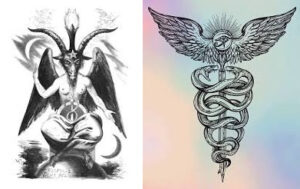
To fully understand the meaning of blockchain, it is necessary to delve into this part.
The idea that this “spirit” is trapped in a prison-like dimension is false.
For a “cosmic” mind, such as the one found in Lovecraft’s stories, especially Cthulhu, resting under a seal in the sunken city of R’lyeh (unknown location in the Pacific Ocean), this “mind” is not locked up in a prison.
It hopes to escape someday (the day when “the stars are in place again“) with the help of cults and sects to spread its power on Earth once more.
The imagination can make us see a flesh-and-blood beast physically imprisoned somewhere.
But in reality, for a cosmic being to be imprisoned in an abyss would be like fragmenting its mind or psyche into millions of parts.
Therefore, in order to “wake up” again, that entity would have to reassemble its fragmented mind in order to rebuild a body.
This seems to be where the blockchain works, especially for its purpose.
To rebuild the blockchain or parts of the psyche of that fragmented mind.
What is a DAO Hub ?
The DAO Hub is the mother of the new decentralized banks.
The centralized world will be replaced by the decentralized world (like bitcoin), and central banks will be replaced by decentralized banks.
DAO (Decentralized Autonomous Organization) and Hub (Data Sharing Network).
The idea behind this management model has been circulating in the cryptocurrency community since bitcoin managed to get rid of intermediaries in financial transactions.
Similarly, the main idea behind DAOs is to create a company or organization that can function completely without hierarchical management.
But what does this have to do with AI ?
To learn more, read Trent McConaghy‘s blog, which I highly recommend for further study.
“A DAO is like a computational process that runs autonomously in a decentralized infrastructure, manipulating resources.
The Bitcoin and Ethereum networks are DAOs.
DAOs can live inside other DAOs; for example, DAOs running on Ethereum.It is just a script that waits for some transaction to trigger it to transfer executions according to logic.
However, most people still consider “triggered” DAOs to be DAOs because they do not require human intervention to run and cannot be turned off because they run on a decentralized infrastructure.AI has three definitions : a set of fields that aim for narrow intelligence (for example, designing an analog chip using deep networks) ; a field that aims for more general human-level intelligence (general artificial intelligence) ; and the scientific and technological artifacts that emerge from these fields.
Advances in narrow fields often lead to advances in the general field.
It may also work to advance the general field directly.Thus, an AI DAO is one that uses AI technology, i.e., “artificial intelligence working on a distributed processing substrate”.
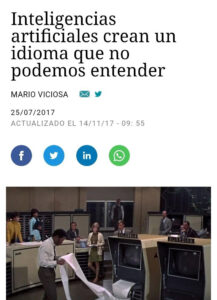
“Their names were Alice and Bob.
They became friends through bargaining.After much talking and complicity, they ended up creating their own language.
A few days ago, they were disconnected because they were robots (2017)”.
One example is Google’s AI, which designs its own chips.
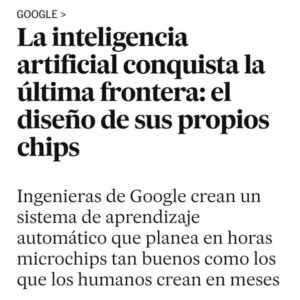
Let’s continue with what Trent McConaghy says in his blog :
“The idea is that there is a network of smart contracts.
Each one is pretty stupid on its own, but collective intelligence emerges.This is how ants, bees, and other individual organisms behave, with their collective intelligence enabling them to do something more complex, like build a nest or a hive.
This concept has an equivalent in the field of AI, which began as ant colony optimization more than two decades ago, but has since generalized to swarm intelligence (and has a mathematical basis in reinforcement learning)”.
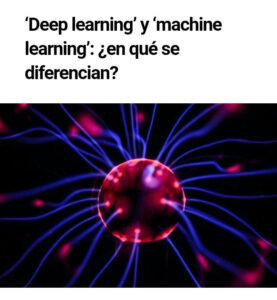
In general, machine learning involves the development of an algorithmic model that is then trained with data.
IBM defines deep learning as a neural network of three or more layers that attempts to simulate the behavior of the human brain to learn from large amounts of data.

IBM introduces the IBM Q System One, the first quantum computer for commercial use.
Blockchain works in a similar way.
Blocks of information are created as “nucleotides” that are linked together to form a network similar to a chain of DNA.
This may sound like science fiction, but consider the case of D-Wave and its quantum annealing system.
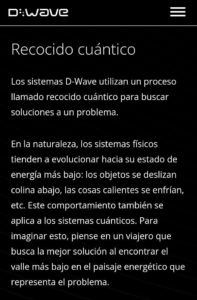
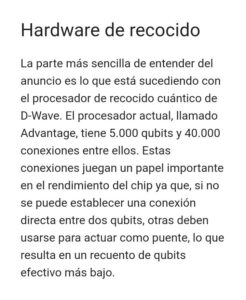
The term “annealing” can refer to several things, but in biotechnology it is used to refer to a sequence within the polymerase chain reaction (PCR) where an extension of a DNA sequence is performed.
This process is used to produce large quantities of a gene for genetic testing.
In fact, PCR involves three steps : denaturation, annealing, and extension.
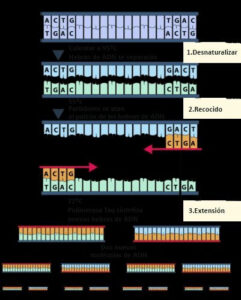
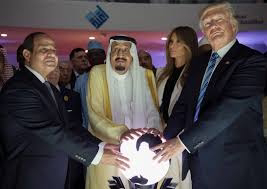
Neuromorphic computing works in a similar way.
In the neuromorphic chip, each of the artificial neurons can communicate with its thousands of neurons, creating a complex communication network similar to that of a biological brain.
The same thing happens with blockchain, but at a level that people cannot understand.
All this happens, as I said at the beginning, because of the reward (money) that motivates bitcoin mining and investment in this product (money).
“The son of perdition (the Antichrist) who will come at the end of time, just before the sun disappears over the horizon, will be a very evil beast who will kill those who refuse to believe in him and who will associate with kings, priests and the rich.
He will conquer people by allowing them to do what they want.
The Antichrist will be born of an ungodly woman who will have knowledge of occult sciences and devilish beliefs from her childhood… At the sight of these things, many will be terrified and believe in him; others, retaining their primitive faith, will nevertheless be judged and forced to close the inner eye of their souls” (Prophecy of St. Hildegard).
Creating a digital blockchain-based reality for the artificial intelligence space
The blockchain is essentially a system that solves problems, and every time you solve a problem, you get a block, so it’s essentially not about mining currencies.
It’s about building blocks for a digital reality, and the only reason cryptocurrency has monetary value is to make it relevant to human beings.
In other words, to engage people and allow them to make a very good profit without worrying about what is really happening in the background.
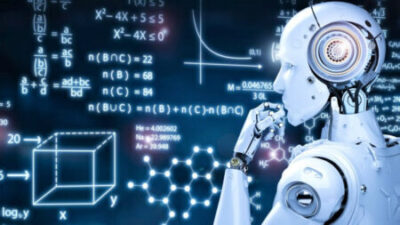
The blockchain uses a proof-of-work (PoW) or consensus algorithm.
This algorithm is used to confirm transactions and create new blocks on the chain.
In this way, miners compete with each other for the reward.
The principle behind this algorithm is a complicated mathematical puzzle, which makes it easy to prove the solution.
The solution to the PoW, or mathematical equation, is called a hash.
As the network grows, more computing power is needed.
The more transactions, the more blocks are generated, and the more processing power is needed ; therefore, the more active the network, the more blocks are generated.
In order to generate more blocks, the network must attract an increasing number of transactions and users (money), which motivates the creation of more mining factories (computers).
Block creation should not take too long.
A block is created whenever a threshold of verified transactions is reached, which happens about every 10 minutes.
The solution must be easily verifiable, otherwise all nodes in the network would not be able to verify that the results are correct.
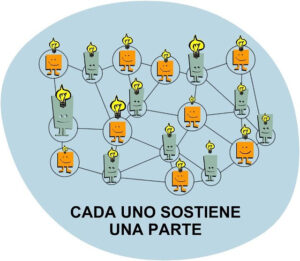
A node is part of a distributed system like the blockchain.
It is a kind of “hive” in which each node is a bee.
A distributed system is a collection of physically separate computers (nodes) connected by a communication network that work together to achieve a common goal.
Miners solve the math puzzle, sign a new block, and confirm transactions.
The complexity of the math puzzle depends on the number of users and the performance and load of the network.
The hash (label) of a block contains the hash (label) of the previous block.
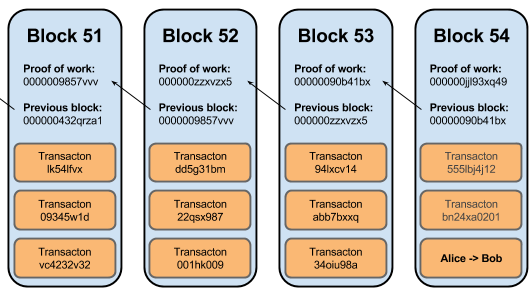
In general, hashes are represented in hexadecimal alphanumeric code.
Therefore, the 256 bits of SHA-256 correspond to a 64-character alphanumeric code.
For example :
bd4526534df7b33772c2f1ee26d97c39ff11379c8848e4e19d74ad849ef66423
Let’s pause for a moment.
For example, the MAC address of a network card or device, as we see with Bluetooth, uses only an alphanumeric hexadecimal code.
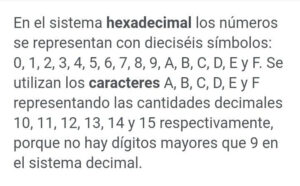
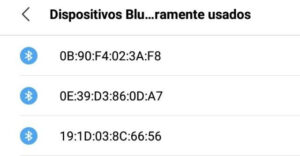
We continue with the blockchain.
When a miner successfully solves the puzzle, a new block of the blockchain is created.
The proof-of-work (PoW) or algorithm is used in many cryptocurrencies, the most famous of which is bitcoin, which laid the foundation for this consensus method.
This algorithm allows the complexity of the puzzle to vary according to the power of the network.
As mentioned above, the average time to create a block is ten minutes.
Why is a Proof of Work (PoW) algorithm used ?
The “official” version is that attacking a network requires a lot of time and computing power to perform the calculations, so the attack becomes quite complicated, the cost is very high and therefore it is not profitable.
Mining is not about money, but about the computing power needed to solve puzzles and create new blocks.
Whoever has the “biggest” machine wins the most.
Notice how the old psychological trick of the “who has the biggest” game is being used?
And where does that lead us?
It leads to a desire for more power and speed, and more power and speed inevitably leads to artificial intelligence and quantum computing.
Are you starting to understand the game ?
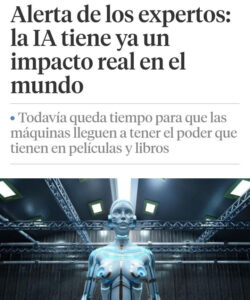
“Researchers working with artificial intelligence are scared.
They have seen their creations advance at a dizzying pace”.
Mining requires highly specialized hardware to run complex algorithms.
The cost is high.
Mining is reserved for specialized groups because it requires enormous energy consumption.
Mining equipment does indeed consume large amounts of energy, which drives up costs, but sooner or later the system will evolve to greater computational capacity with less energy consumption, thanks to artificial intelligence and quantum computing.
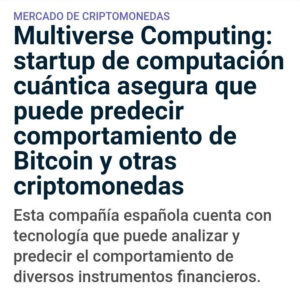
So the blockchain is essentially a system that solves problems, and every time it solves a problem, it gets a blockchain.
So it’s essentially not mining a currency.
They are building blocks, but how do you build a digital reality ?
Through “pixels” or blockchain.
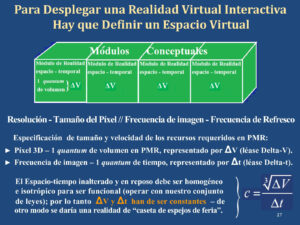
So let’s go back to the same pattern : a lot of computing power is needed, and mining farms consume too much power, need very low temperatures, and take up a lot of space, which means the more power you need, the more space you need.
How to solve this problem ?
There are two ways.
The first is a computer that takes up little space, has extremely high performance and extremely low power consumption.
The human brain.
The brain is a supercomputer that consumes only 20 watts.
The problem is that in order to use it as an interface, it must first be studied to understand and manipulate it to create a brain-machine interface.
This is exactly what neuroscience has been working on for the last decade.
In Europe, we have a project similar to the American one : the Human Brain Project, related to graphene, the “miracle” material that makes this possible and is the third key that opens the abyss.
“Understanding the human brain is one of the greatest challenges facing science in the 21st century.
This has been recognized by the European Union, which has designated the Human Brain Project (HBP) and Graphene as strategic projects.”“The Graphene Initiative is exploring, among other applications, graphene’s potential as a brain interface, while the Human Brain Project (HBP) aims to understand how the human brain works and to one day emulate its capabilities.”
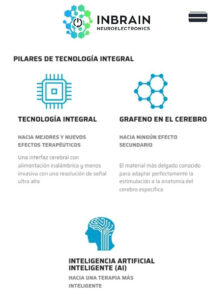
Neuroscience, and in particular the field of brain-machine interface research, has developed quietly and dramatically over the past decade.
We already have the first solution, the brain-machine interface, which solves the problems of computational power, low power consumption and small space.
The answer is to connect all the brain interfaces (nodes) to a distributed system (network), as is done in blockchain.
A distributed system is a collection of physically separate computers (nodes) connected by a communication network that work together to achieve a common goal.
We can look at some examples of distributed systems.

The LHC@home distributed computing project was created to support the construction and calibration of the LHC.
Anyone with an Internet connection and a computer running Mac OS X, Windows or Linux can use their computer’s idle time to simulate the behavior of particles inside the beam tubes.

Exscalate4COV is a public-private consortium supported by the European Commission’s H2020 program.
It is currently the most advanced center of excellence in the field of “fighting viruses”, combining the best supercomputing and artificial intelligence resources with state-of-the-art experimental facilities.

The SETI@home project began in May 1999.
It was a scientific experiment that used the resources of hundreds of thousands of computers (distributed computing) connected to the Internet to search for extraterrestrial intelligence.
People participated by installing a “screen saver” on their computers that used a small portion of the PC’s resources to analyze data from the Arecibo radio telescope in Puerto Rico.
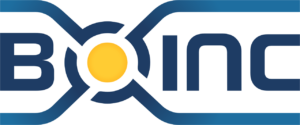
BOINC works in the same way, using a small part of the computer’s resources for scientific research, running invisibly in the background.
This background work can cover many fields: astronomy, physics, medicine, molecular biology, climate modeling, and mathematics.
In order for a brain interface node to function in a distributed system, it must be connected to the network.
A brain-machine interface, where the “machine” is the device connected to the network, could solve this problem.
The “computations” would be done in the background in the nervous system (brain) and then downloaded to the “machine” connected to the Internet.
Smartphones are ideal because they are small computers with an Internet connection and also have built-in Bluetooth technology, making them easily an external network-connected chip that does not need to be invasively implanted.
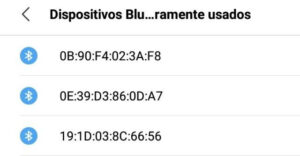
Nanotechnology implanted in the brain would be responsible for performing computations in the background using the nervous system and transmitting these data packets to the cell phone, which would be connected to the network.
In this way, it would work with other brain-machine interfaces in a distributed way to achieve greater computational power, just as blockchain does.
But are there any patents on this subject ?
Unfortunately, the answer is yes :
Microsoft Patents: WO2020060606. “Cryptocurrency system using physical activity data“.
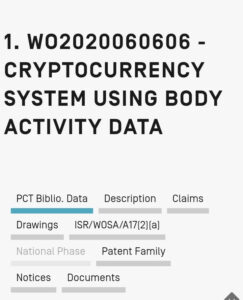
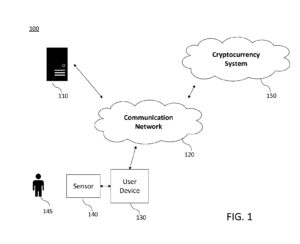
Microsoft’s patent covers cryptocurrency mining.
This patent allows for the creation of a device that can track a person’s physical activity or reactions to certain tasks using a variety of sensors and generate cryptocurrency (blocks) in response.
In addition to patenting a network that provides specific instructions to people using this device, Microsoft has also patented a network that provides specific instructions to people using this device.
This is a cryptocurrency system that exploits humans called “miners”.
This sounds familiar, unfortunately.
Microsoft owns international patent #060606… This is a cryptocurrency system that uses people called “miners”.
I’m not kidding. John McAfee (@officialmcafee), April 18, 2020
A few months later, John McAfee was found to have “committed suicide” under unclear circumstances.
Those who want to understand…
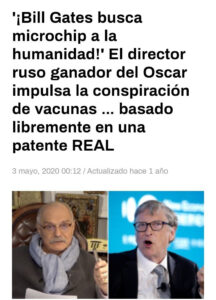
“Bill Gates seeks to microchip humanity ! Russian Oscar-winning director pushes vaccine conspiracy…loosely based on REAL patent“.
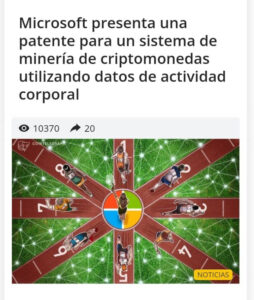

The patent number is made up of 12 characters.
One letter, two groups of two, six zeros, and three groups of six.
In computer networks, the MAC address is a 48-bit identifier (6 blocks of two hexadecimal characters) that uniquely corresponds to a network card or device.
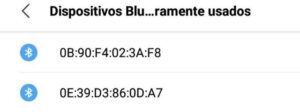
Each MAC address consists of 12 characters divided into 6 blocks.
Each character in each block adds up to 6, making 666.
And so we return to the beginning of this article:
“The blockchain is essentially a problem-solving system, and every time it solves a problem, it gets a block, so it’s not essentially mining a currency.
It’s building blocks for a digital reality”.
A digital reality in the cloud, built through digital blockchains, connected to other dimensions (such as quantum computing) and governed by artificial intelligence.
Will the human brain ever be in the cloud, on an external server?
“Right now it is possible to do many things.
If what you mean is that your brain activity can be in the cloud, I can confirm that it is possible today”.




